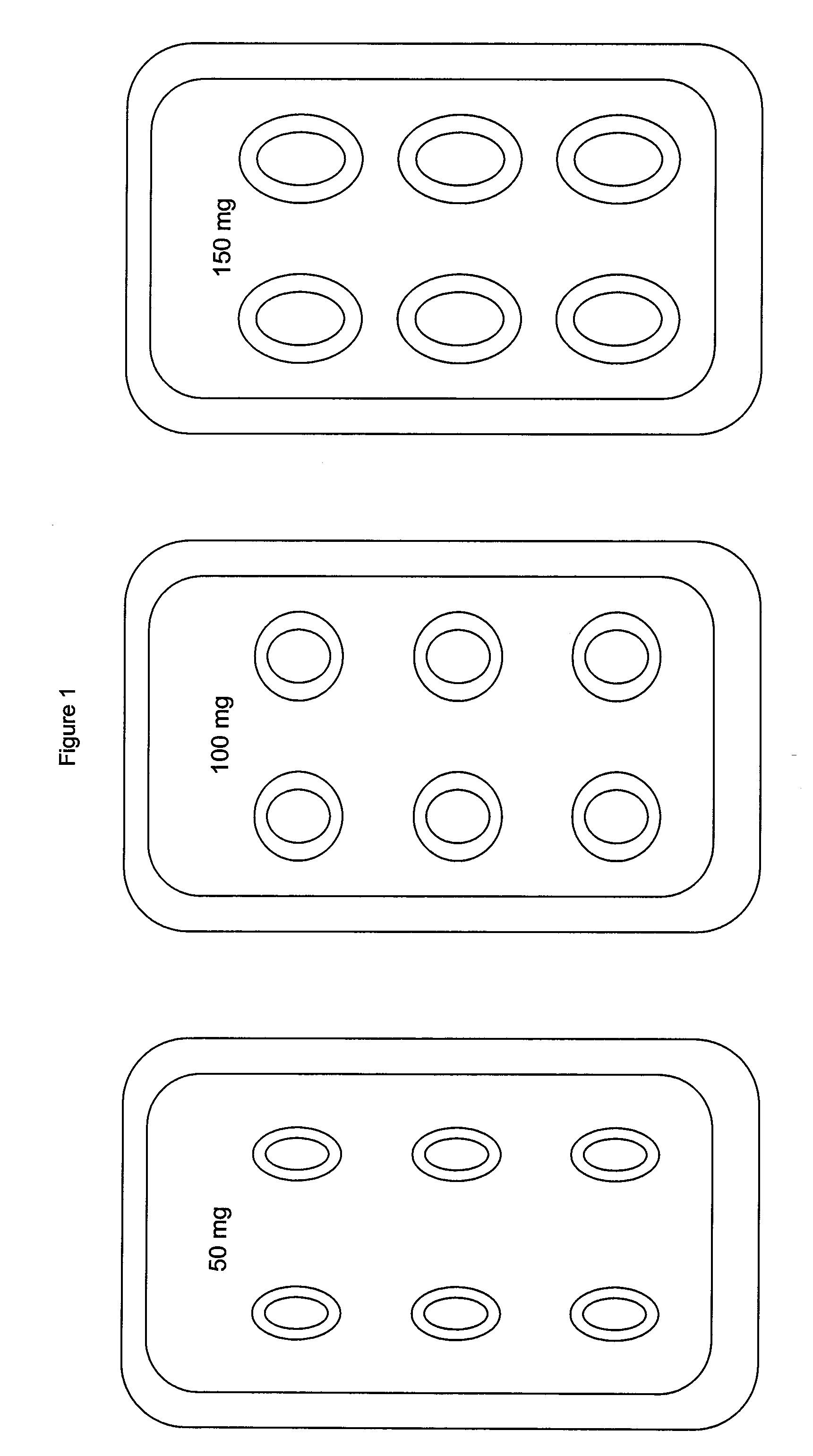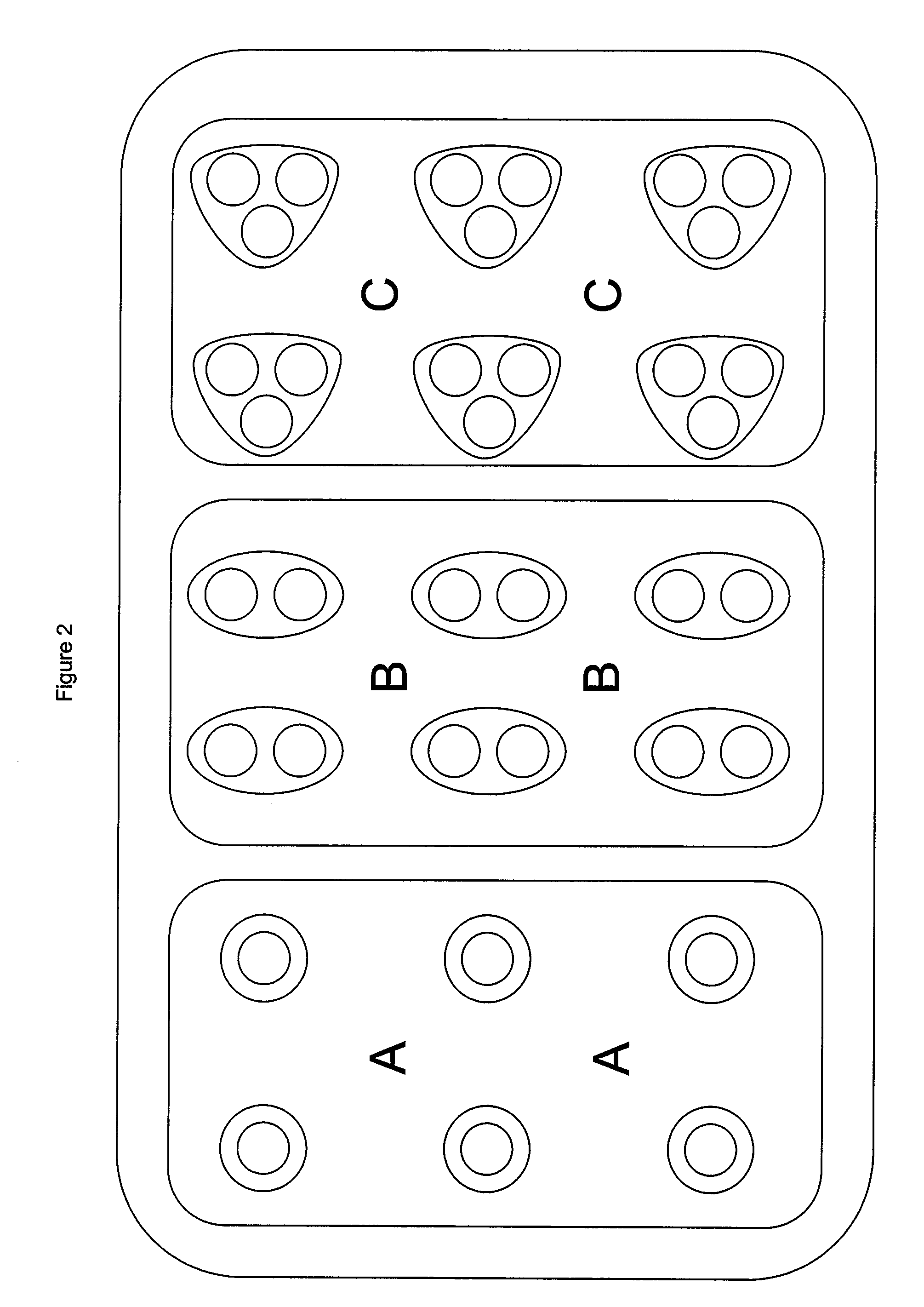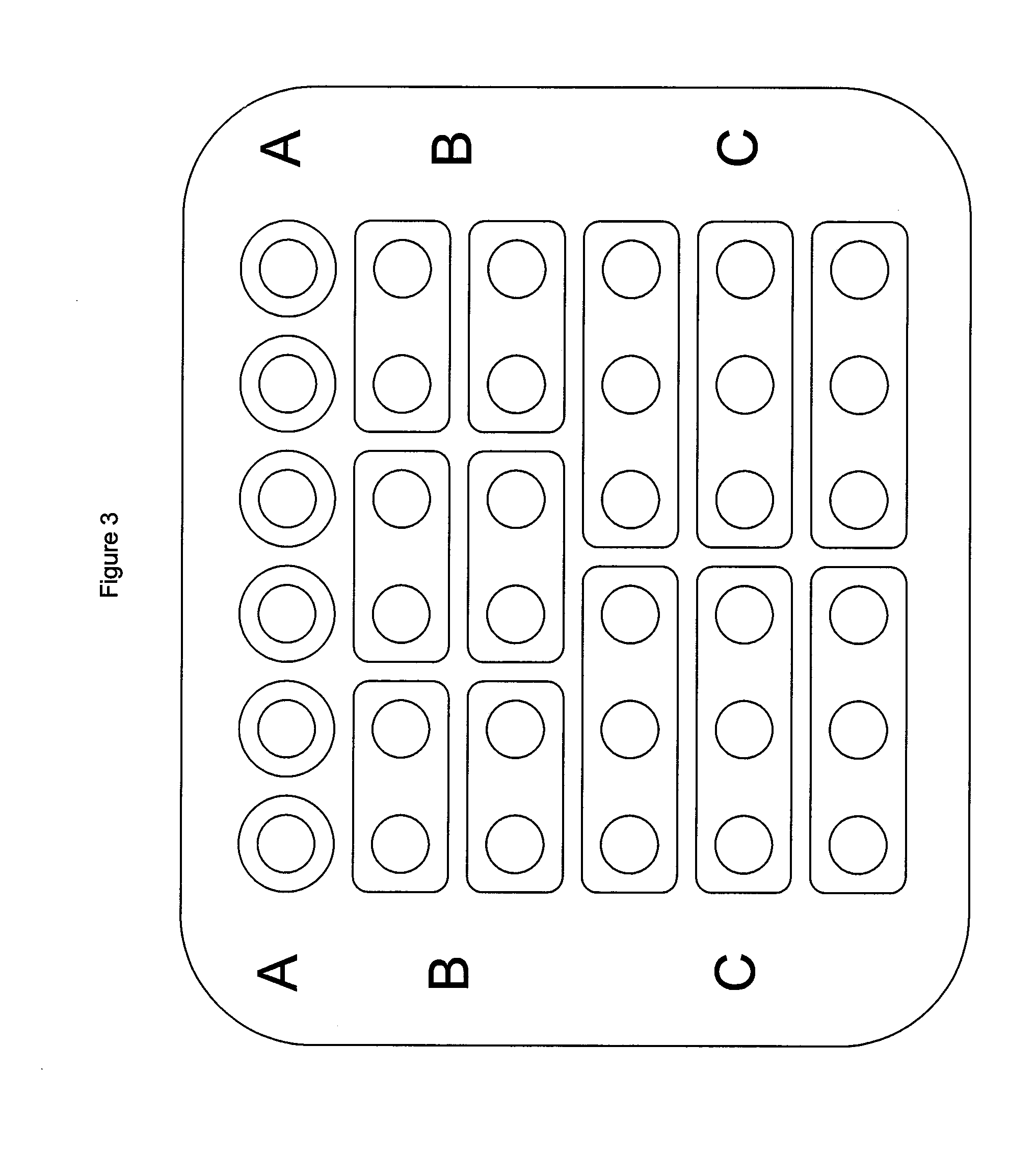Titration of Tapentadol
a technology of tapentadol and dosing regimen, which is applied in the direction of biocide, nervous disorder, drug composition, etc., can solve the problems of 20,000 deaths each year, affecting the safety of chronic nsaid therapy, and potentially serious side effects, so as to reduce the frequency of somnolence, improve the tolerability of tapentadol, and reduce the effect of drug efficacy
- Summary
- Abstract
- Description
- Claims
- Application Information
AI Technical Summary
Benefits of technology
Problems solved by technology
Method used
Image
Examples
examples
[0237]The following examples describe the invention in greater detail and are intended to illustrate the invention but not to limit its scope.
A) Comparative Example C-1
Without Titration
Design:
[0238]A randomized, double-blind, multiple dose, parallel-group study assessing the efficacy and safety of 3 dosages of tapentadol prolonged release (bid) (25 mg, 50 mg and 100 mg) compared to oxycodone prolonged release (bid) 20 mg and placebo over 28 days in patients with hip and / or kneejoint osteoarthritis.
Subjects:
[0239]40-75 years old, male and female patients.
[0240]375 patients, randomized to placebo, standard opioid, tapentadol.
[0241]Day 1 only evening dose
Day 2-Day 28 bid
[0242]Day 29 only morning dose.
example e-1
C) Example E-1
Forced Titration
Static Regimen
Design:
[0247]A randomized, double-blind, parallel-group study assessing the efficacy and safety of two titration regimen of tapentadol prolonged release (25 mg, 50 mg, 100 mg and 100 mg, 150 mg, 200 mg of free base of tapentadol) given orally twice daily (bid) compared to placebo and oxycodone controlled release (10 mg, 10 mg, 20 mg) in patients with chronic pain due to osteoarthritis of the knee.
Subjects:
[0248]Male and female patients ≧40 years old with a diagnosis of osteoarthritis of the knee
[0249]Patients started with the lowest dose of the titration phase for the first 3 days and up-titrated to the intermediate dose on day 4. Subjects were maintained at the intermediate dose for the next 11 days. After these 11 days patients started the maintenance phase and received the highest dose of each regimen for the remaining 14 days. Subjects who were unable to tolerate the highest dose after having received that dose for at...
example e-3
H) Example E-3
End of Administration Regimen
[0268]The symptoms of opioid withdrawal following long-term treatment (90 days) with tapentadol immediate release (IR) compared with oxycodone IR were evaluated in a randomized, double-blind, active-control, parallel group, flexible dose, multicenter phase III trial of patients with chronic low back pain of chronic pain from osteoarthritis of the knee or hip. Patients (N=849) were randomly assigned in a 4:1 ratio to a flexible dose of tapentadol
[0269]IR (50 or 100 mg / dose; maximum 600 mg / day) or oxycodone IR (10 or 15 mg / dose; maximum 90 mg / day) every 4 to 6 hours. Symptoms of withdrawal following opioid discontinuation were examined using the Clinical Opioid Withdrawal Score (COWS) and the Subjective Opioid Withdrawal Score (SOWS) questionnaires. Based on the COWS assessment 2 to 4 days after study medication ceased, patients reporting mild-to-moderate withdrawal symptoms were significantly less in the tapentadol IR group (17%) than the ox...
PUM
| Property | Measurement | Unit |
|---|---|---|
| concentrations | aaaaa | aaaaa |
| concentrations | aaaaa | aaaaa |
| time | aaaaa | aaaaa |
Abstract
Description
Claims
Application Information
 Login to View More
Login to View More - R&D
- Intellectual Property
- Life Sciences
- Materials
- Tech Scout
- Unparalleled Data Quality
- Higher Quality Content
- 60% Fewer Hallucinations
Browse by: Latest US Patents, China's latest patents, Technical Efficacy Thesaurus, Application Domain, Technology Topic, Popular Technical Reports.
© 2025 PatSnap. All rights reserved.Legal|Privacy policy|Modern Slavery Act Transparency Statement|Sitemap|About US| Contact US: help@patsnap.com



